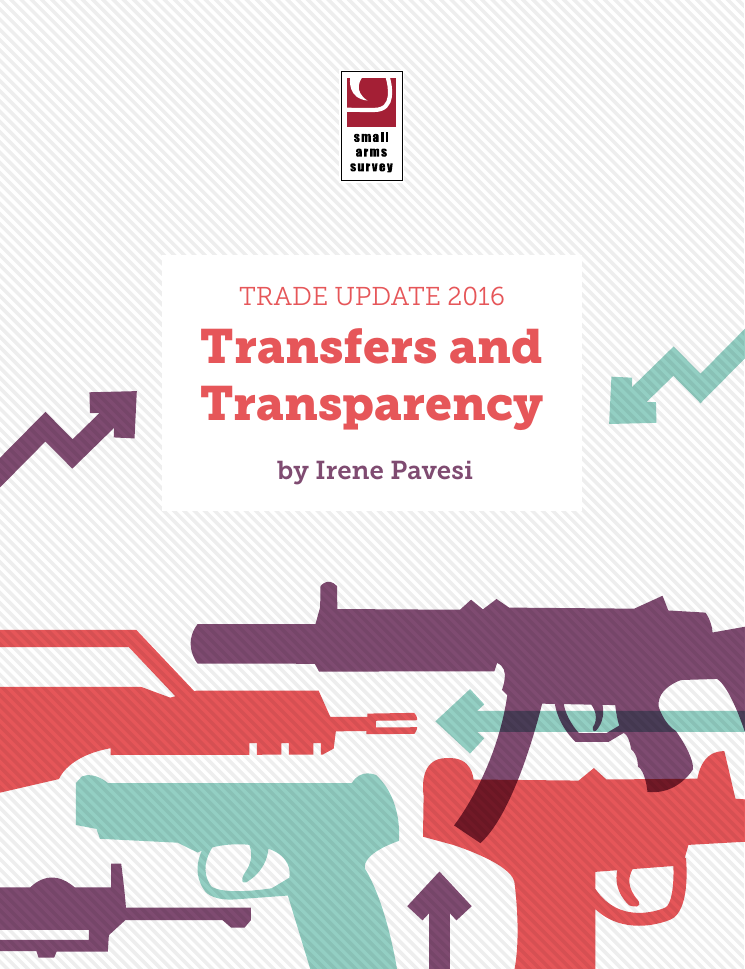
Trade Update 2016: Transfers and Transparency
The Small Arms Survey’s Trade Update 2016: Transfers and Transparency reports that the world’s ‘top’ and ‘major’ small arms exporters delivered at least USD 5.8 billion worth of small arms in 2013, an increase of 17 per cent compared to the USD 5 billion worth exported in 2012.
The United States exported a record USD 1.1 billion worth of small arms in 2013, followed by Italy (USD 644 million) and Germany (USD 557 million). These three states accounted for almost 40 per cent of exports in 2013. In addition, significant increases in exports were recorded by Croatia, Israel, Spain, and Switzerland, whose small arms exports in 2013 pushed them over the USD 100 million mark. Meanwhile, transfers of small arms to the United States (USD 2.5 billion) alone accounted for 42 per cent of all imports.
Small arms flows to the Middle East
One of the most notable developments is the 84 per cent increase in the value of small arms deliveries to top and major importers in the Middle East—from USD 342 million in 2012 to USD 630 million in 2013.
‘The near-doubling of small arms transfers to the Middle East from 2012 to 2013 raises important questions’, noted Small Arms Survey Director, Eric Berman. ‘Do states rigorously assess the potential for diversion, destabilization, or human rights violations before exporting arms? The Survey’s recent research, and in particular the results of the Survey’s 2016 Transparency Barometer, indicates that many major exporters are not open regarding such assessment processes or even decisions to authorize or deny a transfer’.
In particular, the United Arab Emirates became the world’s fourth-largest small arms importer, as the value of its imports rose from USD 71 million in 2012 to USD 168 million in 2013. Saudi Arabia was the fifth-largest importer, with an increase from USD 54 million to USD 161 million. Egypt, Iraq, Israel, Jordan, Kuwait, Lebanon, Oman, and Qatar all imported at least USD 10 million worth of small arms in 2013.
Gains in transparency?
The 2016 Trade Update also presents the 2016 edition of the Small Arms Trade Transparency Barometer, which identifies Germany, the United Kingdom, and the Netherlands as the most transparent among 49 reviewed small arms exporters. For the first time since 2007, Switzerland has relinquished the top spot. The least transparent states are Iran, North Korea, Saudi Arabia, and the United Arab Emirates, each of which scored zero points.
Export authorizations remain the most opaque dimension of small arms reporting. Nearly half of the exporters under review provided no information on the licences they granted, while more than 60 per cent did not report on those they refused.
Not all small arms producers and exporters that are believed to be important report to international transparency mechanisms. As a result, the findings of the Trade Update are skewed towards documenting more transparent countries, and thus underestimating the total value and extent of the global trade in small arms.
The Arms Trade Treaty could potentially boost transparency in the small arms trade, as states parties are required to deliver their first annual reports on exports and imports of conventional arms, including small arms, by 31 May 2016. Yet gains will only be secured if all states parties—or at least the vast majority—make their annual reports publicly available.
Available in: ENGLISH
Have your say about Small Arms Survey resources: take 5 minutes to fill out our questionnaire.